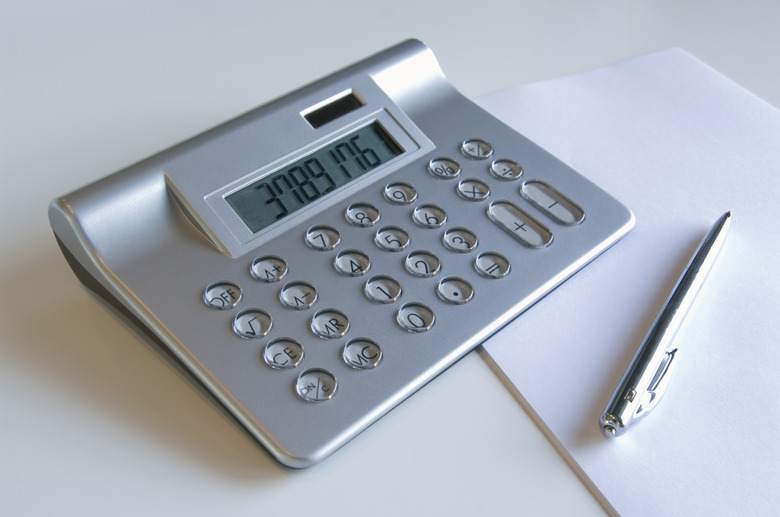How To Calculate The pH Of A Strong Acid
If you want to become successful in chemistry, you need to understand acids and bases. You should not only understand what these compounds are and how they behave in solution, but also be able to perform simple calculations of pH and grasp why the behavior of strong acids simplifies calculations involving these substances.
To begin with, you should know that in chemistry, concentration is often expressed in moles per unit volume, usually liters (mol/L) rather than in mass units per liter. The number of grams in 1 mol of a substance can be determined from the molar masses or molecular weights of its constituent atoms, available on the periodic table of elements.
- The quantity mol/L is usually written as the single symbol M.
What Are Acids and Bases?
What Are Acids and Bases?
An acid is a compound that donates a proton in aqueous solution. This proton is sometimes represented in equations as a stand-alone proton (H+) or as a hydronium ion (a proton plus water: H3O+). The other component of the dissolved acid is called the conjugate base. The general formula for the dissociation of an acid is HA → H+ + A–, where A– is the conjugate base.
Bases, on the other hand, serve as the doppelgangers of acids: They readily accept protons, tantamount to donating hydroxide ions (OH–) in aqueous solution. The remnant of a dissociated base is called the conjugate acid, and is often a metal cation such as Na+.
What Is pH in Chemistry?
What Is pH in Chemistry?
The pH, or "power of hydrogen," is a value generally (but not mathematically) constrained to the numerical range of 0 to 14.0. Solutions that are acidic have a low pH, neutral solutions (such as pure water) have a pH of 7, and basic solutions have higher pH values.
Mathematically, pH is just the negative of the logarithm to the base 10 of the concentration of H+ (or H3O+) ions: pH = –log10[H+]. As long as you have a calculator and are careful with your powers of 10, these calculations are straightforward.
Strength of Acids and Bases
Strength of Acids and Bases
A strong acid is one that readily gives up its protons, and does so even when the ambient pH is low, which means there are already a lot of protons floating around. Weak acids do not give up their protons so easily, becoming dissociated to a meaningful extent only when pH is closer to neutral. Strong bases, similarly, give up hydroxide ions readily even in high-pH solutions.
The strengths of acid and bases can be assigned a value: pKa, or the acid dissociation constant, the pH value at which half of an acid has donated its protons while the other half remains in the conjugated state. (Bases have, you guessed it, pKb values.) Stronger acids thus have lower pKa values.
Calculation of the pH of Hydrochloric Acid
Calculation of the pH of Hydrochloric Acid
Hydrochloric acid, or HCl, is a well-known and common strong acid. Hydrochloric acid uses include stocking college and high-school chemistry labs around the world as well as a host of industrial and manufacturing applications.
Example: Calculate the pH of a 0.100 M solution of HCl.
Since HCl is a strong acid, it completely ionizes, and the pH of HCl in solution can be found from the concentration (molarity) of the H+ ions, by definition equal to 0.100 M. (The conjugate base of the acid, which is the chloride ion Cl–, would also have a concentration of 0.100 M.)
The pH is thus –log(0.100) = 1.000.
Clearly, higher molarity values will yield lower pH values and conversely for HCl (or any acid).
Online pH Calculator for Strong Acids
Online pH Calculator for Strong Acids
If you don't feel like hauling out a calculator and want to learn about the chemical behavior of a few more strong acids, see the page in the Resources.
Cite This Article
MLA
Beck, Kevin. "How To Calculate The pH Of A Strong Acid" sciencing.com, https://www.sciencing.com/calculate-ph-strong-acid-6392888/. 26 March 2020.
APA
Beck, Kevin. (2020, March 26). How To Calculate The pH Of A Strong Acid. sciencing.com. Retrieved from https://www.sciencing.com/calculate-ph-strong-acid-6392888/
Chicago
Beck, Kevin. How To Calculate The pH Of A Strong Acid last modified March 24, 2022. https://www.sciencing.com/calculate-ph-strong-acid-6392888/
